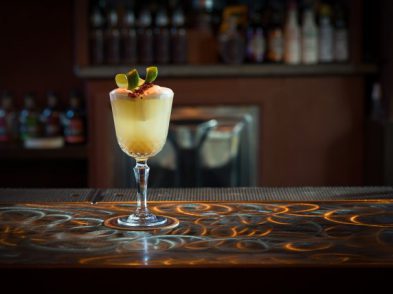In a sarcophagus in the Chapel
of San Lorenzo, the one surmounted by the brooding figure of Michelangelo’s Il
Pensieroso, and on which two of his even more famous nudes recline, is
interred the first Duke of Florence, Alessandro de’ Medici, called Il Moro (the Moor).
The contents of the sarcophagus are slated to be
included in perhaps the most curious investigations yet to be undertaken in Florence:
the systematic exhumation and forensic study on the remains of the family that
ruled it for some four centuries.
The investigation is currently
being conducted by a group of paleopathological and historico-medical researchers
from the University of Florence. One of their many objectives is to settle the controversy still being
fought out behind closed doors in the great museums and the hallowed halls of
academia over the racial identity of Il Duca Alessandro.
Although most historians, both contemporary and modern,
have described Alessandro’s mother as a black slave in the Medici household, a
few modern scholars take exception. They claim that the African features so
obvious in all his portraits were ordered by Cosimo, the cousin who succeeded
him after his assassination in 1537, to prevent Alessandro’s line from ever
contending with his own for the suzerainty of the city state of Florence
and the region of Tuscany.
However, those scholars who are
convinced that the first Duke, the illegitimate son of Pope Clement VII, was
black, point to the ‘who’s who’ of royal and noble families descended from him
through the centuries as the true reason behind the mounting tension in this
increasingly important but still unsettled argument.
Whatever the exhumation reveals will be of
major interest no matter the outcome. If genetic tests prove that
Alessandro was not black, then the issue becomes not an exposé on the
African ancestry of so many of Europe’s
great houses, but evidence of a conspiracy.
What such a discovery would suggest, instead, is the
rather appalling case of purported African origins being used to denigrate or
politically incapacitate a branch of the family. If this turns out to be the
case, then the fact that the dynasty that devised such a systematic propaganda
campaign against a collateral branch of its own was one of the most influential
and powerful in Europe, and that such a virulent form of racism had its origins
in the premier city state of the Renaissance should keep academics in
the field of social and ethnic studies wagging their chins for years.
What kept Alessandro de’ Medici in the obscurity to
which he has been relegated for so long? What undoubtedly contributed to the
situation was the move in 1871 of the mayor and his office to the Sala Clemente
VII in Palazzo Vecchio. Whether intentional or not, it blocked the general
public’s access to one of the palace’s most important and
significant rooms. The iconography of the sumptuous audience hall’s decorations
commemorate the transition in status of the Medici from a
banking family to that of a royal one, beginning with Alessandro in
1530-a message that the local people, steeped in their city’s history, could
easily read.
In the many portraits included in the murals
covering the ceiling and all four walls of the Sala, there are at least
three of the first Duke that are plainly recognizable.
With his African features, he has a prominent place in
Giorgio Vasari’s magnificently illustrated narrative of this pivotal
period in the dynastic history of the de’ Medici.
The first and the central image
records Alessandro’s attendance at the coronation of the Emperor Charles V
by Pope Clement. The next, in a lunette of smaller dimensions, is his
installation as Duke of Florence. The third, framed similarly, celebrates his
marriage to Margaret of Austria, the emperor’s daughter. If he was indeed the
son of the pope, as most authorities are convinced and as these scenes in the
Sala Clemente apparently support, then this is the only representation we have
of the marriage of a papal bastard to an imperial one.
Four years ago the then mayor, Leonardo Domenici,
graciously gave up his suite, claiming it was too beautiful an artistic
attraction to remain hidden and that its potential for the tourist industry
should not be overlooked.
On the Florentine leg of her official visit to Italy
in February 2009, Domenici gave Nancy
Pelosi, Speaker of the United States House of Representatives, and the
delegation travelling with her, a personal tour of the Sala Clemente. The
press reported that he delivered a talk on Giovanni Stradano’s fresco of the
Siege of Florence by Charles V in 1529.
However, there was no mention that Domenici drew the
attention of his visitors to the portrait of the young black man looking down
on them from the ceiling above even though the vignettes in which he is
depicted are a direct result of the emperor’s assault on the city. They
represent the three major articles of the peace accord Clement signed with
Charles a few months later in Barcelona: that the pope recognize and crown
Charles emperor, that in return the emperor create Alessandro Duke of Florence
and, thirdly, that he give Alessandro his daughter’s hand in
marriage.
Hardly a month after the inauguration of President
Obama, the United States’ first black president, how could Mayor Domenici not
realize that he might have made a far greater impression on Ms. Pelosi and the
entire world had he pointed out both the royal dignity and political power
accorded Alessandro de’ Medici as a result of the siege depicted by Stradano?
Or perhaps Palazzo Vecchio is
hoping that on Mr. Obama’s next visit to Italy, Florence will be included in the itinerary. This would, of course, afford Mayor
Renzi the unique opportunity and the privilege of introducing to the first
African American president the first black head of state in modern western history.
For more on Alessandro de’ Medici, see http://www.pbs.org/wgbh/pages/frontline/shows/secret/famous/medici.html




